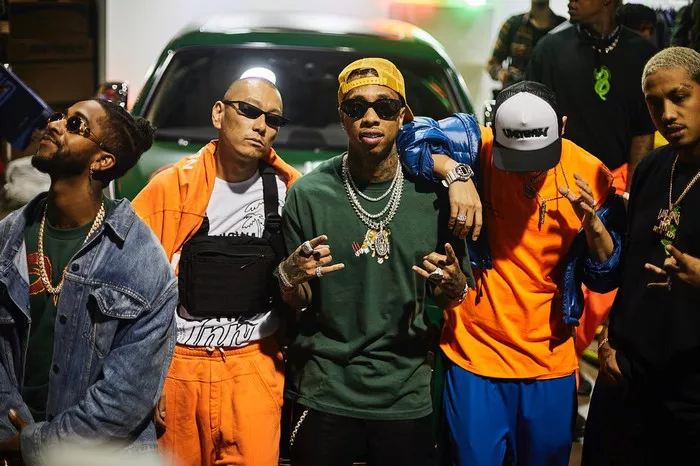Rap music has been a significant cultural force since its inception in the 1970s. Over the years, the genre has evolved, giving birth to various subgenres, each with its distinct characteristics. One such subgenre is trap music, which has gained immense popularity in recent decades. While trap and rap share many similarities, they are distinct in several ways. This article explores the differences between trap and rap, delving into their origins, musical elements, lyrical themes, and cultural impacts.
1. Origins and Evolution
Rap Music: A Brief History
Rap music originated in the Bronx, New York, during the late 1970s. It emerged as a form of expression for African American and Latino youth, who used it to convey their experiences and struggles. Early rap was characterized by its rhythmic and rhyming speech, often accompanied by DJing and breakdancing. Artists like Grandmaster Flash, Run-D.M.C., and LL Cool J were pioneers of the genre, laying the foundation for what would become a global phenomenon.
Trap Music: From Southern Roots to Global Domination
Trap music, on the other hand, originated in the Southern United States, particularly Atlanta, Georgia, during the early 2000s. The term “trap” refers to places where drug deals are made. The genre’s name reflects its thematic focus on the struggles and realities of street life and the drug trade. Early pioneers of trap music include artists like T.I., Gucci Mane, and Young Jeezy. Over time, trap evolved and gained mainstream popularity, influencing artists across various genres worldwide.
See Also: A Comprehensive Guide to Rap Opera
2. Musical Elements
Production and Instrumentation in Rap
Traditional rap music is known for its emphasis on lyrical delivery and complex rhymes. The beats in rap music often feature samples from funk, soul, and jazz records, with a strong focus on rhythm. Classic rap beats are typically created using drum machines, turntables, and samplers. The production style can vary widely, from the minimalist beats of the early hip-hop era to the more polished and layered productions of contemporary rap.
The Signature Sound of Trap
Trap music is characterized by its distinctive production style, which includes the use of heavy 808 bass drums, rapid hi-hats, snare rolls, and atmospheric synths. The beats are often more aggressive and hard-hitting compared to traditional rap. The use of triplet flows (a rhythmic pattern where three syllables are rapped in the space of two beats) is also a hallmark of trap music. Producers like Lex Luger, Metro Boomin, and Zaytoven have been instrumental in shaping the sound of trap.
3. Lyrical Themes and Content
Narratives in Rap Music
Rap lyrics often address a wide range of topics, including personal struggles, social issues, politics, and storytelling. Early rap was heavily influenced by the realities of urban life, with artists using their music to shed light on poverty, violence, and systemic racism. Over time, rap has diversified, with subgenres like conscious rap focusing on social justice and introspection, while others like party rap emphasize fun and celebration.
The Dark and Gritty World of Trap Lyrics
Trap lyrics are predominantly centered around themes of street life, drug dealing, and the hustle. The content is often gritty and raw, reflecting the harsh realities of life in the “trap.” Topics such as drug addiction, violence, and survival are common. Despite the often dark subject matter, trap music also features themes of triumph and success, with artists celebrating their rise from the streets to stardom.
4. Cultural Impact and Influence
Rap: A Global Cultural Movement
Rap music has had a profound impact on global culture, influencing fashion, language, and lifestyle. The genre has transcended its roots to become a universal form of expression, resonating with diverse audiences around the world. Rap has also played a crucial role in giving a voice to marginalized communities and has been a powerful tool for social change. Artists like Tupac Shakur, Nas, and Kendrick Lamar have used their platforms to address critical social issues and inspire change.
Trap’s Rise to Mainstream Popularity
Trap music, while initially a niche subgenre, has experienced a meteoric rise in popularity. It has become a dominant force in contemporary music, influencing not only hip-hop but also pop, EDM, and even rock. Trap’s influence can be seen in the works of mainstream artists like Drake, Post Malone, and Billie Eilish, who have incorporated trap elements into their music. The genre’s widespread appeal has also led to the emergence of subgenres like trap EDM and trap pop.
See Also: Best Chicano Rap Songs
Conclusion
As both rap and trap continue to evolve, their futures remain intertwined yet distinct. Rap music will likely continue to diversify, with artists exploring new sounds and themes. Trap, with its global appeal, will keep influencing and being influenced by other genres, pushing the boundaries of contemporary music. Understanding the differences between trap and rap helps appreciate the unique qualities each brings to the musical landscape and their respective cultural significance.
In summary, while trap music is a subgenre of rap, it is distinct in its origins, musical elements, lyrical themes, and cultural impact. Both genres have contributed immensely to the evolution of contemporary music, each bringing its unique flavor and influence. By understanding these differences, we can better appreciate the rich tapestry of sounds and stories that define rap and trap music today.

